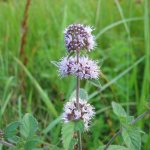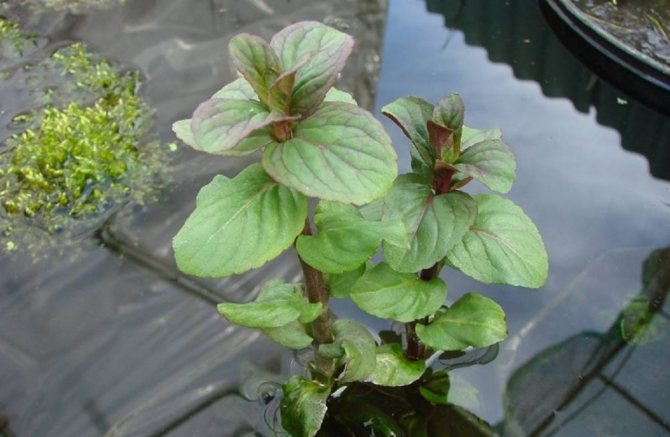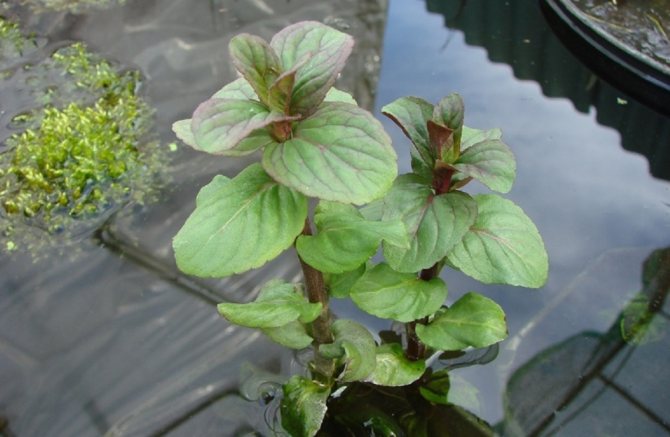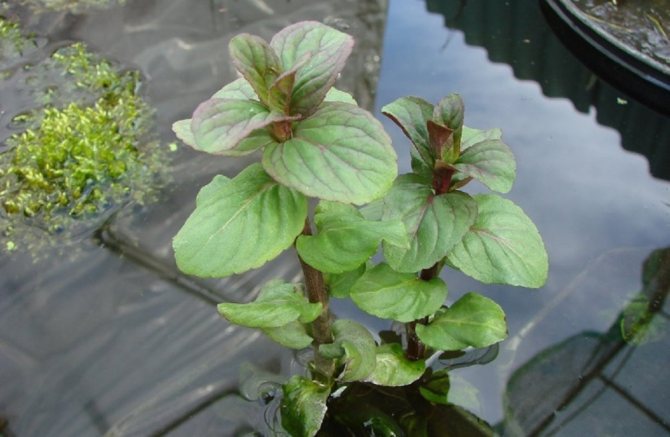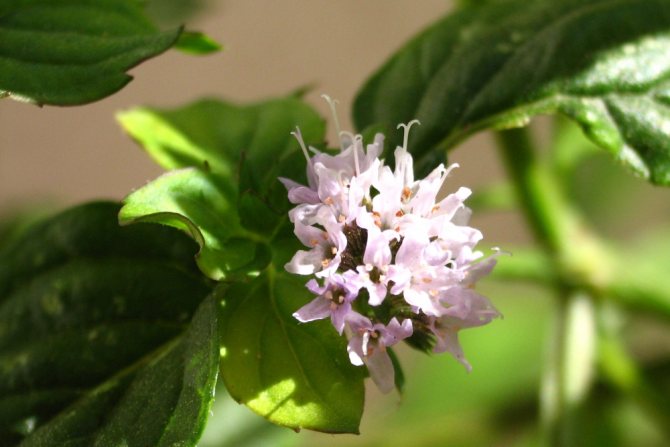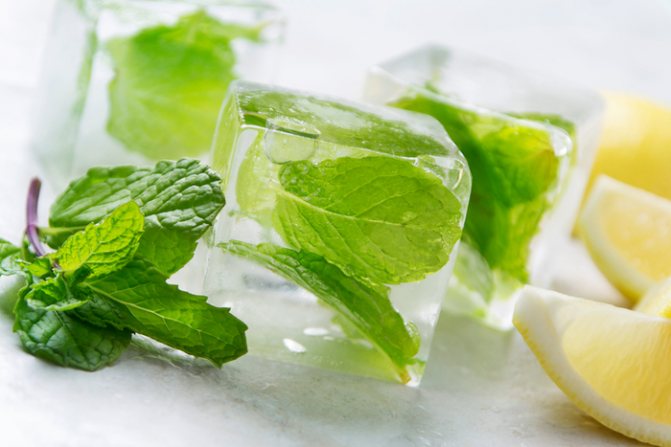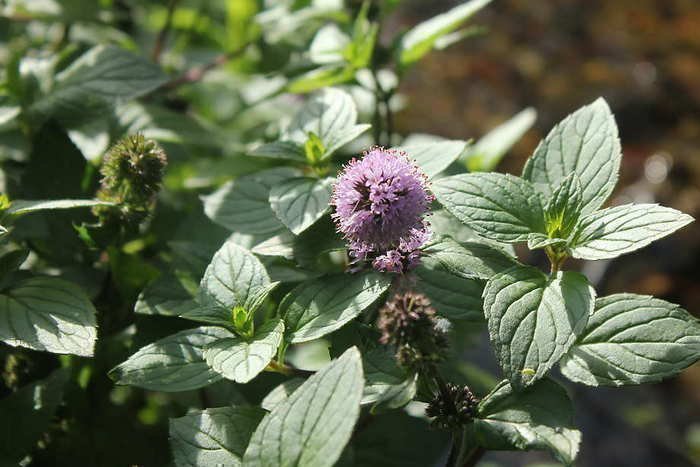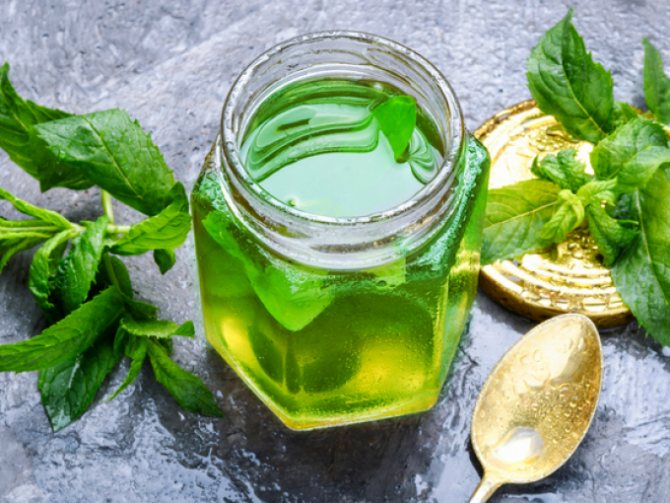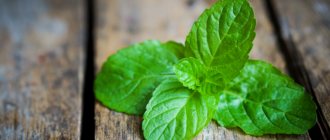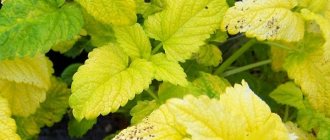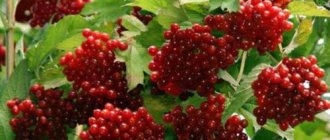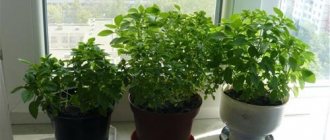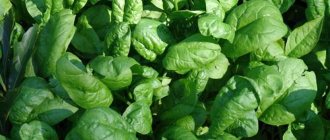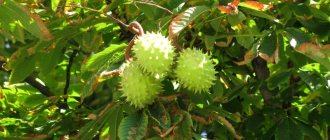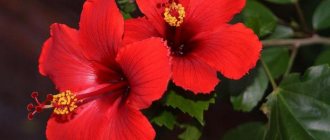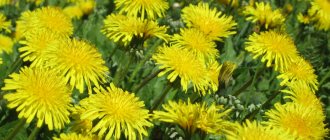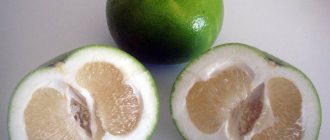Mint is a temperate plant that is demanding on soil moisture. A wide variety of species can be found in the wild flora. Some types of mint (in particular, peppermint
) are cultivated in garden plots. A distinctive feature of mint is the lavender brushes of its flowers.
Mint is perhaps one of the most fragrant plants on our planet, used in a variety of areas of human activity. Even in ancient Rome, it was believed that its smell helps to improve mood and stimulates the activity of thought processes, so students were recommended to wear mint wreaths. Already in the tombs of the pharaohs, the remains of mint were found, probably this is curly mint, which is still bred to obtain an essential oil. Perhaps the legend of the beautiful nymph Mint, which the goddess Persephone turned into mint, belongs to this very species.
The characteristic smell of mint can be felt by rubbing its leaves, since it is in them that the essential oils are concentrated, which give off the aroma. the plant is widely used in the alcoholic beverage and confectionery industry as a flavoring agent (in the manufacture of sweets, gingerbread, cookies, ice cream). In cooking, mint was especially widely used before the appearance of imported Indian spices - pepper, cloves, cinnamon and others. But don't overdo it using mint as a spice. The norm for laying fresh mint is considered 5 grams per serving, dry - four times less. And if you are going to use peppermint, which smells much stronger, then reduce the dosage. Peppermint oil is found in many cosmetics, such as toothpastes, powders, and so on.
About a thousand years ago, the first poet who created a poem about medical botany - Villafrid Strabo wrote in his poem "Sadik":
"If anyone can name the species and properties of mint completely, then of course he can calculate how many swift fishes frolic among the waters of Eritrean. Burning sparks count that from the throat of huge Etna they fly into the air."
Since then, the situation has not changed, mint is really difficult to distinguish between species, and even perfectly give hybrids. However, they are all used in much the same way, regardless of the name.
Almost all peppermint scent is based on menthol, which is released from their essential oil when cooled. Pure menthol is a crystalline substance; it falls out of the oil in the form of beautiful long colorless crystals. ntol is widely used in medicine - with a cold, migraine, as a disinfectant and pain reliever, in the treatment of frostbite, for the production of validol. Mint leaves and grass are used for migraine, neuralgia, as an antitussive, expectorant, for tachycardia (palpitations), nausea, vomiting, allergies, as a means of increasing appetite, for gastritis with high acidity, stomach and hepatic colic, as an astringent.
All mint are very fond of water, they can often be found in swampy places, or even right in the bed of small streams. On the banks of the rivers of the Moscow region, thickets are often found in the water field mint
, to the north in the river you can see
water
, to the south right in the water grows
pennyroyal
... Field mat is one of the most common mint in Central Russia.Most often, when we say "mint", we mean it exactly, unless, of course, you are talking to a medic.
The largest of our mints does not avoid water, long-leaved
... In good conditions, it fully justifies its name, its shaggy, long jagged leaves reach 20 cm, and purple flowers gathered in dense spike-shaped inflorescences sway at a height of more than a meter. The whole plant is densely pubescent and from this it seems almost completely gray.
There is only one peppermint for doctors and pharmacists - peppery
, which, by the way, does not grow in the wild. Peppermint is bred as a spice plant and for the needs of medicine.
Peppermint is one of those rare plants about which it is precisely known, not only who first found and described it, but how and where it appeared, and even with accuracy almost up to the birthday. In 1769, the Englishman Ray, in his Synopsis Stirpium Britannicum (List of British Plants), says that one plant of hers was found in a garden mint crop in the field of a certain Eales in Burfordshire, England (a hybrid of water mint and garden mint). The same Ray for the first time in 1704 called this peppermint - English "peppermint". From this plant, propagated vegetatively (it practically does not give seeds), plantations of cultivated peppermint originate in both hemispheres, which began to develop rapidly in the 18th century. Back in the 19th century, this mint was called cold, or (and even more often) English mint. Until now, many of her varieties come from England, which was her homeland.
There are many varieties of peppermint: with long, round, curly, toothed, hairless, shaggy, green, gray, purple leaves. Most of all, doctors love peppermint with a purple color of the leaves, perhaps not even for a particularly strong smell, but just so it is more convenient to distinguish it from impurities.
Water mint
noticeably differs from other mint in its almost capitate inflorescences, rarely with 1-2 lower whorls, and usually with one large, almost hemispherical. The flowers are purple, two large bracts stick out from under the inflorescence, when viewed from above, a bow with a large pink knot in the middle is obtained. Often the stem spreads slightly at the base, then rises. It grows mainly in forest waters. This mint has a strong smell and is perhaps the most menthol of all the species.
Field mint (Mentha arvensis L.)
Long-leaved mint (Mentha longifolia (L.) Huds.)
nature.rf
Biological description with photo and place of growth of water mint
Watermint (Mentha aquatica) belongs to the Lamiaceae family. It is a marsh or coastal herbaceous perennial reaching 90 cm in height. Its stems are angular, almost square in cross-section and are covered with villi.
Oval, slightly pubescent leaves of the culture reach 1-4 cm in width, and their length is 2-6 cm. As a rule, they are painted in a dark green color, and in some varieties a reddish tint is noticeable.
In July, tiny flowers appear on the bushes, painted in a light lilac shade. They are collected in fluffy inflorescences that persist until autumn. Then fruits containing seeds are formed.
In nature, water mint is widespread in the European part of the continent, in the south-west of Asia, central Russia and north-west Africa. Prefers to grow in moist soils.
The use of water mint in medicine
Watermint has found applications in the same areas as peppermint, namely in medicine and cooking.
This plant contains:
- essential oils;
- fatty acid;
- flavonoids;
- alcohols;
- aliphatic hydrocarbons;
- triterpenoids;
- sesquiterpenoids;
- phenylpropanoids.
Such a rich chemical composition allows water mint to exert anti-inflammatory, antimicrobial, antioxidant, antiemetic and neuroprotective effects on the human body.
These properties of watermint allow it to be used to treat the following conditions:
- headache and toothache;
- appetite disorders;
- inflammatory processes of the upper respiratory tract;
- flatulence;
- angina pectoris;
- runny nose;
- migraine;
- nausea;
- heartburn;
- nervous and agitated states;
- spasms in the coronary vessels.
Attention! For the manufacture of medicinal potions from mint, only leaves are used, and sometimes stems collected during the flowering period of the culture.
Agrotechnics
Leaving mint growing in the country is almost not required. Freshly planted bushes are often watered. Better to do this in the evening. Mature plants are less hydrated. In a rainy summer, mint will have enough natural precipitation; in dry weather, it is watered once every 1.5-2 weeks. Planting needs to be weeded and loosened regularly. Mint roots are located almost at the surface of the soil, so the weeds are very disturbing. It is more convenient to carry out such a care after watering or rain, while the earth has not yet dried out. It is easier to remove weeds from wet soil without damaging the mint roots.
The culture responds well to feeding. It is better to take for them preparations with a high content of nitrogen and phosphorus, but organic compounds can also be dispensed with - rotted manure or compost. Care is especially important for mint in the form of dressings during the period of active growth of its bushes - in the spring. In the future, the beds are mulched from time to time, adding wood ash to the compost. In the fall, professionals recommend digging deep into the soil, adding semi-rotted manure into it (2 kg per 1 m²).
The plantings need to be monitored, not allowing them to thicken. Powdery mildew can attack the mint.
If you want to get bushy plants, they are periodically trimmed, shortening the top. Then the mint stops stretching upward and begins to actively form side shoots. As a result, more fragrant leaves can be harvested from it. If the mint bushes are strongly stretched in height, you should pay more attention to watering. Usually the plant reacts in this way to a lack of moisture.
Planting, care and breeding methods for watermint
The best place to grow mint is in the shallow water of an artificial reservoir or a damp, swampy shore. In this case, the chemical composition of the soil does not matter, the plant will take root in almost any conditions.
The cultivars suitable for cultivation are "Crispa" with twisted, bright green leaves and stems reaching a height of 40 cm. The second variety is «Rubra ", the branches of which have a purple hue, and the leaves are reddish.
It is better to plant mint in April or May, and you can also do this in August by placing the planting material in containers with soil and exposing them to the air. This is the best option as the culture grows rapidly and can be somewhat limited this way. It is worth deepening the seeds no more than 10 cm.
Watermint tolerates cold and frost well and does not need special shelter. Therefore, for the winter she can be left in the place where she "lived" in the summer.
Mint can be propagated by seeds harvested after the culture has faded. And the method of dividing the bush is also common, when the rhizome is divided into several parts. In this case, it is important to ensure that each of them has viable kidneys.
General information
There are many varieties of mint known to gardeners and good food lovers, all slightly different in taste, aroma and appearance. There are up to 18 species in the Lamb family of the genus "Mint". However, the largest group of plants in this family is actually the delicious sage with its bright blue flowers, bitter taste, and spicy aroma. Many other well-known herbs are also found in this family, including basil, thyme, lavender, and even skullcap.One of the characteristics of the plants in this family is that they all provide essential oils, giving each plant its own unique characteristics, increasing their potential for medicinal use.
Most species of mint are low-growing perennials, but there are also higher ones. The height range is 10 cm to 1 meter, so not all of them are at ground level. It lets out individual shoots, which helps it spread by developing roots. In good conditions, this allows it to grow rapidly. For most gardeners, one or two plants are enough to propagate them, as they all grow rapidly. Some species can spread very quickly, so it is recommended that they be grown in containers or with ground barriers, although this does not prevent it from being a useful addition to your garden. Peppermint can be attacked by some pests such as snails and aphids.
Most of these plants have square stems, with leaves arranged in pairs opposite to each other. They are often fleecy with a jagged edge, with varying leaf shapes and colors ranging from green to purple. Flowers, as a rule, can be of different shades from white to purple, and collected in whorls. The corolla is divided into two lips and has 4 petals, where the upper one is usually the largest.
Mint grows in all parts of the world and is suitable for most climates, including a wide range of areas throughout Australia. Some of the varieties are considered perennial, but in colder climates it is best to replace them every year. They generally require a lot of water and prefer rich soils. Due to ideal conditions, mint is grown commercially in Tasmania, as there are long summer days at high altitudes, where temperatures average 25 ° C during the day and up to 15 ° C at night. Ideal conditions tend to require a lot of sun, but a little shade won't hurt as temperatures can be high in warmer regions.
Watermint crosses very easily with other species, so there are many options to add variety to any garden. Therefore, if you plant several species, then some of them will hybridize in your garden. However, many varieties, such as ginger, chocolate mint, and many others, then become clearly visible.
Decorative uses of watermint
Water mint is used not only for medicinal but also decorative purposes. Such plantings can be used to decorate an artificial reservoir, the culture will retain its attractive appearance throughout the warm season and will not lose its attractiveness after flowering.
In addition, you can place the bushes near the beds with cabbage or other vegetables. The scent of mint will keep insect pests away and protect the area from invasions of mice and rats.
In the video, the specialist shows water mint and talks in detail about its medicinal properties.
Water mint is common in central Russia, in Europe, as well as in North-West Africa and South-West Asia. The main places of its growth are areas near swamps, rivers, ponds and streams, or wet soils. In the middle lane, it is generally considered the most common marsh plant. It will not be difficult to cultivate this light lilac beauty in artificial reservoirs. And with the help of water mint, you can mask the shores of ponds, because most often it grows like a creeping plant.
Getting to know the plant
Water mint is an excellent member of the Lamiaceae family. The height of this herbaceous perennial often reaches 90 cm. The stems of water mint are square in cross section and rather hairy. The width of the oval leaves of this water beauty is from 1 to 4 cm, and the length is from 2 to 6 cm. Sometimes these rounded pubescent leaves can acquire a slight reddish tint.If you rub them thoroughly in your hands, you can feel the characteristic smell of mint.
The tiny flowers of this wonderful perennial are collected in fluffy small umbellate inflorescences and are painted in a light lilac color. Such inflorescences are extremely attractive to bees. Watermint blooms can be admired from mid to late summer. And the fruits of this beauty consist of four nut-like single-seeded parts.
Using water mint
In general, the properties of watermint are similar to those of peppermint, because the latter is a hybrid of spikelet with watermint. In short, this moisture-loving beauty can be used as a medicinal plant or become an excellent spicy-aromatic addition to all kinds of drinks and dishes. It has a fairly low content of essential oils and a very high content of menthol.
In folk medicine, water mint is used for stagnation in the gallbladder in order to obtain a choleretic effect. And as part of complex therapy, it is an excellent tool for eliminating abdominal pain that occurs when the intestines are disrupted. Also, indications for the use of this healing perennial are tachycardia (heart palpitations), diarrhea, flatulence, as well as an insufficiently active digestive process. It is noteworthy that water mint preparations are more preferred in the treatment of abdominal pain than peppermint preparations. For internal use, a special infusion is made from this plant - 15 g of raw materials are taken in a glass of boiling water. Take such an infusion daily, one glass warm.
And for external use, excellent ointments are prepared from water mint, which are applied mainly to poorly healing wounds. In addition, such ointments are used to treat cervical erosion.
Also, this plant is used for herbal baths and for scaring away mice, rats and various insect pests. Water mint is also well suited for decorating the shores of reservoirs.
How to grow
Watermint takes root well and grows quite quickly. So that it does not drown out neighboring plants, it is best to grow it in baskets, periodically shortening the stretching stems. And in the ground it is usually planted in containers. The most optimal planting depth for this plant will be about 8 - 10 cm.
The soil for growing this fluffy beauty is better to select moisture-absorbing, humus-rich, acidic and loose. Water mint is planted in autumn or spring. In care, it is quite unpretentious and tolerates light partial shade quite well, although in general it is a light-loving plant. The thickets of this green pet are recommended to be renewed every three to four years.
When growing water mint outdoors, it is periodically advised to feed it with organic fertilizers such as compost or manure.
This extraordinary plant reproduces by dividing the bushes in the spring. In general, its reproduction is possible by layering, dividing rhizomes, cutting off roots and cuttings of stems.
Perennial herb from the Labiate family. Stem 30-100 cm high covered with hairs. Leaves are petiolate, ovate. The flowers are crowded with spherical, apical heads - pink or purple. Blooms from the second half of summer. It grows in damp places, along the banks of rivers and streams everywhere. The herb contains essential oil (but less than in peppermint), tannins, vitamins C and K. It was studied at the Azerbaijan Medical Institute by associate professor RK Aliyev, and has shown itself as a good wound healing agent in the form of liquid ointment. To obtain an ointment, mint leaves are crushed and moistened with 95-degree alcohol for five days at room temperature. The resulting extract is filtered and poured into a porcelain glass, where sunflower oil is added, and gently heated in a water bath with frequent stirring until the alcohol has completely evaporated.Then this liquid is filtered while warm. It is advisable to prepare the ointment before use. Some doctors have used this ointment successfully in the treatment of cervical erosions. In folk medicine, water mint has almost the same uses as peppermint. A decoction or infusion made from water mint is taken orally as a slightly stimulating nervous system and soothing muscle cramps, carminative, analgesic and diuretic. Especially often mint is used for gastrointestinal disorders, pain and cramps in the stomach and intestines, flatulence, diarrhea, palpitations. To eliminate bad breath, use a decoction of mint in water, mixed half with wine (a cup in the morning and in the evening). Mint infusion is brewed, like tea, from 2 tablespoons of leaves in 2 glasses of water or milk. Drink it hot. Recommended squeezed juice from fresh leaves a tablespoon, mixed with white wine, is considered a good diuretic that helps with stone disease. Mint decoction is used for washings and baths. Freshly crushed grass or poultices from it are used for bruises. Pounded leaves help against stinging wasps and bees. Raw mint leaves are eaten with salad. Field mint (M. arvensis L.), which grows in abundance in meadows, glades and slopes, has a similar application.
Tags:
Did this article help you? Yes -0 No -0 If the article contains an error Click here 196 Rating:
Click here to add a comment to:
Water mint - use in folk medicine, medicinal properties (Diseases, description, symptoms, folk recipes and treatment)
Mint syrup, method number 2
Mint has a characteristic pleasant aroma, familiar to everyone. In different periods of plant growth, it has a different degree of nutrient content. According to the observations of experienced summer residents and herbalists, mint gains the largest amount of essential oils during the flowering period, which occurs in the second decade of June, July and the first week of August.
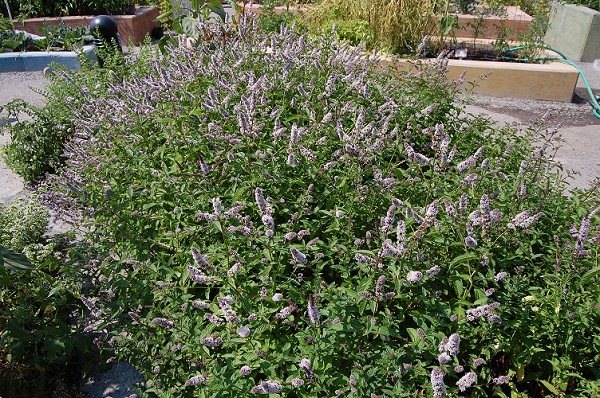
Peppermint picks up the most essential oils during flowering
Herbalists strive to collect it at the very beginning of flowering. Harvesting is recommended in dry, sunny weather. It is desirable that the stems be free of dew and raindrops. The entire aerial part of the plant is suitable for medicinal purposes. The cut stems are placed in a shaded area and protected from direct sunlight.
In this video, you will learn about the methods of drying mint for the winter.
Today, most of the fruits that are harvested for the winter are dried in ovens, ovens or special devices - electric dryers. Today, all devices are easy to purchase at specialized retail outlets or on the Internet.
Any increase in temperature has a detrimental effect on the taste, smell and useful characteristics of the culture. However, greens are mainly harvested at the end of July - August, so there is no need to ensure the proper temperature.
How to store mint after drying so that it does not deteriorate and lose its main characteristics?
Usually the process of drying crops lasts no less than a week. You can understand that the plants are already dry enough and ready for storage by touch. The preparation was successful, if the leaves of the culture rustle, they can simply be separated from the stem and crumbled. This spice can be transferred to special containers for long-term storage.
Saving space is ensured by simply chopping the spice or grinding it into powder. However, in order to preserve its extraordinary taste and smell, it is better to store dried material whole, along with leaves and shoots.
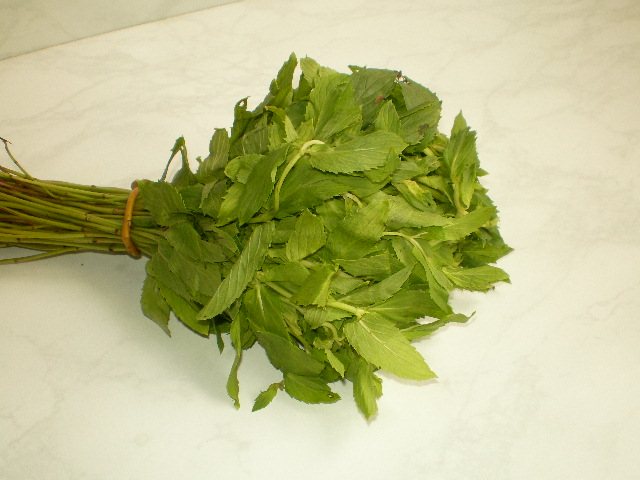

The best option for storing spices is glass jars with screw lids or bags made from natural materials, best of all, cotton or linen.
You can use sealed ceramic or wooden containers, vacuum bags and zip-lock packages. However, it is still better to avoid artificial materials: plastic or cellophane. After all, it is they who absorb a large amount of essential oils.Therefore, you should also avoid materials such as paper or cardboard.
Properly packaged mint should be stored in a dark, non-humid place, avoiding heat sources. The plant can keep its excellent characteristics for about a couple of years, regardless of the surrounding conditions.
That is why it is always worth noting the date of preparation of stocks on the packaging and periodically conducting an audit of all blanks. Stuck mint, which is a pity to throw away, should be added to the bathroom. This simple mixture is very beneficial for the skin.
So, mint is a healthy crop that can be stored well when dried. The culture harvested in this way has a wide range of applications. It can heal, strengthen hair, nourish the skin. And what a delicious and aromatic mint tea!
It is also great for soothing and strengthening the nerves. The crushed dried leaves of the plant are used as a spice for various dishes. Such a "seasoning" will provide food not only with a pleasant aroma, but also with a piquant taste. So be sure to grow and harvest mint. Moreover, it is as easy as shelling pears to do it!
Many people like to collect pleasantly smelling mint in order to prepare it for future use in order to make aromatic tea. But wild herb is not as beneficial as peppermint. It is cultivated by connoisseurs in their summer cottages, taking up a lot of space, and is a perennial culture.
Like the fragrant herb of any other variety, you want to keep this one until winter, so that later you can prepare delicious tea on its basis, as well as use it in various medical procedures. It should be dried to prevent rotting and the appearance of molds on the surface.
It is necessary to collect and store the culture correctly so that later it does not lose its appearance and healing properties. If you do everything correctly, then for a whole year you can use the fragrant herb for your own needs.
There are guidelines for collecting medicinal herbs. It is better not to take plants located near the roadway or in highly polluted areas. It is advised to find a clearing away from the city. A very young culture should not be collected either.
You need to cut mint near the ground. You don't need to pick it off with your hands. It is recommended to cut the stem to a third of its entire length. Then we can talk about the rapid growth, which makes possible another harvest this season.
It is recommended to hang cut stems with leaves and flowers in bunches in a dry and normally ventilated room, where sunlight does not penetrate. Suitable as a room in an apartment, and a barn or attic.
You can spread the raw material on the surface of paper or a clean cloth. Only a thin layer is required so that the grass dries well. When the culture is placed on the floor, it must be turned over at least 2 times during the entire drying period.
The use of an oven is not advised. The herb dried in it can lose a large number of its healing qualities. Dried mint is usually stored in a cardboard box, glass jar with a lid, or a cloth bag during the winter.
It is permissible to grind dried herb into powder. But it should be stored in a tightly closed container. And, unlike a whole dry product, it can lose many of its beneficial properties. Dried twigs or powder are not recommended to be stored for more than 2 years.
Before sending the greens to the refrigerator, they must be dried. The mint is carefully sorted out. It is imperative to get rid of damaged or dry parts of the plant. And then rinse and dry.
There is a secret on how to keep mint leaves fresh for the winter. To do this, collect the herbs you have processed in bunches. Place in containers with a minimum amount of water, and cover with foil on top. You can also use a clear plastic bag. Then send the containers to the refrigerator.
Mint shoots, as well as leaves separated from the stems, are wrapped in paper napkins. They are placed in containers or tight-fitting bags.Only in this form will mint retain its freshness, its beneficial properties and its original appearance for about a month.
Mint with sugar for the winter is often harvested by zealous housewives. This is the best way to add it to tea.
If you just dry it, then at room temperature this must be done for several days. To determine the readiness of a plant, simply press down on its leaf. When it easily separates from the stem and crumbles in your hands, drying can be safely completed. After that, grind the raw materials and pack for long-term storage.
It is important to store the mint properly after drying. Of course, chopped greens take up little space, but at the same time they lose their color and aroma more intensively. Therefore, it is best not to grind it into powder ahead of time.
Glass jars are best for storage. They must be dry with a tight-fitting lid. So neither moisture nor pests will penetrate inside. In a dry place, herbs will retain their aroma for up to six months.
There are many varieties of mint. In cooking, each variety is used for specific purposes:
- Peppermint goes well with vegetable dishes and for preparing various drinks;
- field is used for homemade preparations, put in salads;
- long-leaved is good with meat and fish, added to recipes;
- apple is perfect with lamb.
- You can hang cut bunches of mint in the attic. Wait until dry and grind into powder. Store in linen bags or glass jars.
- You can spread the collected leaves in one layer in the shade and dry. The main requirement is the absence of direct sunlight.
- Special dryers can be used.
The number of products to obtain 300g syrup:
- 100 grams of mint with round leaves;
- half a kilogram of sugar;
- a glass of 250 grams of water.
We suggest you familiarize yourself with: How to store beets for the winter at home, the best varieties for storage
How to cook:
- All kitchen utensils must be clean and completely dry.
- Rinse the collected mint and dry on a lint-free towel.
- Chop finely with a sharp knife and cover with half the sugar.
- Leave until morning.
- Boil a strong syrup from water and the remaining sugar. Check the readiness of the syrup by dropping it onto a dry saucer - if the drop keeps its original shape, the syrup is ready.
- Mix mint sugar and syrup, boil for 20 minutes.
- Cool and mix with a blender into a homogeneous mass.
- Strain into a prepared container through several layers of gauze.
- Close and refrigerate.
If desired, mint syrup can be prepared for future use.
To do this, boil the strained syrup, pack it in a container warmed up in the oven, seal it tightly, turn it upside down and wrap it up.
After complete cooling, remove to the basement.
Required products:
- 250 grams of fresh mint leaves;
- 800 ml of water;
- 600 gr. Sahara;
- half a medium lemon.
How to cook:
- Wash the plant, put it on a lint-free cloth.
- Boil the syrup from the specified amount of water and sugar.
- Pour the prepared raw materials into the boiled solution and boil for a few more minutes.
- Strain several times, add lemon juice.
- Bring to a boil, pour into prepared dish and roll up.
Benefits of mint water
Water with mint optimizes the work process of the whole organism, useful components have a beneficial effect on the internal organs and the general condition of a person. Spicy water is ideal for detoxification, its properties remove accumulated toxins and neutralize the harmful effects of free radicals. Its benefit lies in the regeneration of cells and tissues in the intramuscular system of the body. Scientists around the world have concluded that mint drinks slow down the aging process. Now let's get down to specifics - what are the beneficial properties of mint.
- Helps with weight loss - 100 grams of mint is only 40-75 kilocalories.The calorie content of a product depends on various factors (place of growth, harvest time, storage method, heat treatment during cooking, etc.).
- Improves Digestion - Tea with the plant can be drunk with diarrhea and intestinal upset, will help get rid of the problem, which is commonly called irritable stomach syndrome. The mint contains active ingredients that can neutralize the work of Staphylococcus aureus, neutralize the Helicobacter bacteria, Escherichia coli and other potentially dangerous pathogenic microorganisms. Spicy water works well for bloating by acting as a "carminative" remedy.
- Cleans the liver - Mint effectively cleanses the body of toxins and toxins that are formed during the active work of the glands. The treatment course lasts 2-5 weeks, its duration depends on the state of the liver. In addition, mint helps to improve the outflow of bile and reduce the tone of the ducts, which will relieve the face and eyes from yellowness. This powerful antioxidant cleanses liver tissue by saturating it with active trace minerals.
- Strengthens the immune system - To increase immunity, an infusion is prepared, which should be taken daily, especially during a wave of flu or colds. The vitamin complex protects the body and allows it to endure a dangerous period.
- Improves skin condition - Mint for cosmetic procedures can be either fresh or dry. Mint water is ideal for washing face and body skin. Combination and oily skin requires special care, as it is prone to allergic reactions. Before making masks with this plant, it must be tested on the wrist. For the face, ointments with the addition of essential oil are suitable, which stimulates blood circulation and prevents clogged pores. Ester gently smoothes fine and expression lines, promotes the regeneration of skin cells, prolongs youth.
Fragrant fresh mint sugar
In the summer, many herb aficionados make preparations. It is easy to make a healthy broth or tea from these fragrant twigs. They also use fresh foliage to add to soft drinks or fresh baked goods. By winter, all the mint is under the snow.
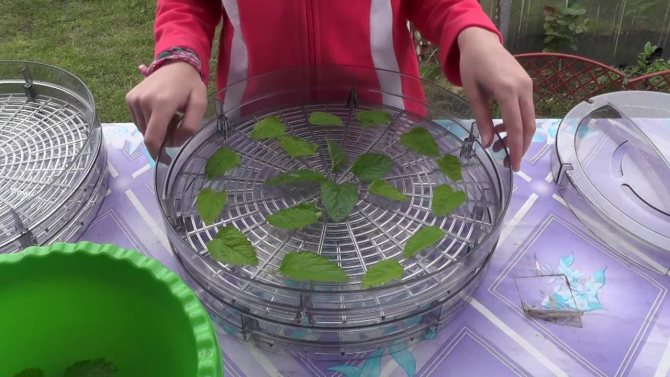

More recently, most housewives had only one way - to dry. Recently, due to new culinary traditions and the development of technology, methods have increased significantly.
Harvesting mint for the winter should start with its collection, and then proceed to processing.
The best raw materials for long-term storage can be obtained from two- or three-year-old plants. It is best to harvest in the evenings or in the morning when there is no dew on the plants. Also, the weather should be cool and dry.
Mint is best harvested by cutting off about a third of the stem. The fact is that its hard part is not suitable for storage for the winter. Moreover, if left until the end of the season, it can give fresh growth.
When to pick mint for the winter? It is best to start harvesting it in the middle of summer - July or August. In most Russian regions, by this time, mint begins to bloom. It is easy to determine this by lilac-pale or pinkish inflorescences.
By this period, a large amount of essential oil accumulates, which is concentrated in the tops of the shoots, flowers and foliage. There are also many other active substances. It is for them that this culture is so appreciated.
Another way to keep mint fresh for the winter will appeal to all sweet lovers. Flavored sugar based on selected greens of mint is suitable for preparing a variety of culinary dishes, it can be added to baked goods, drinks, fruit salads and desserts. At the same time, the sweetness takes over all the beneficial properties of the plant, and the mint is kept fresh for the winter.
For 200 grams of chopped mint greens, take the same amount of sugar.The ingredients are thoroughly chopped and mixed in a blender until smooth, and then laid out in dry, clean cans, simultaneously thickening the sugar.
How to make mint water
To prepare a fragrant drink, you need to take a bunch of chopped grass and fill it with water, which must first be heated to 60 degrees. Then the container with the liquid should be placed in a dark place for a day. After straining, the refreshing infusion is ready for use. To enhance the tonic effect, you can add lemon and cucumber juice to it. On the basis of mint water, you can make a fortified cocktail, just mix your favorite berries with the finished drink and enjoy a pleasant taste.
Growing conditions
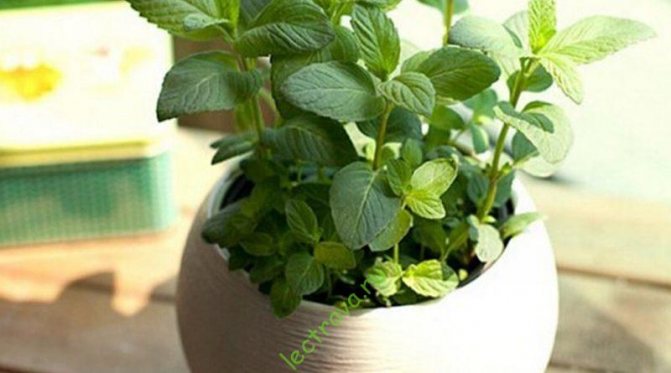

Grows well even in a pot
Peppermint cologne is tolerant of shade and partial shade, but in order to increase the oil content in the leaves, it is preferable to choose a sunny place when planting. Many soil types are suitable, including clayey soils, although the soil should ideally be open and slightly acidic. The soil should be moist and not dry out for a long time, with additional watering in the summer to prevent wilting. This ornamental grass does not require much maintenance and is quite hardy.
Using peppermint for weight loss
Mint infusion is an indispensable remedy for those who are struggling with extra pounds, because it significantly reduces appetite and dulls the feeling of hunger. During weight loss, you need to drink tea often, in addition to this, the plant can be added to diet meals and vegetable salads. Its zesty aroma will add an extra spice to your meal.
During the fasting day, you can drink Sassi water - mint infusion, which will help to cope with excess calories and speed up metabolic processes. To prepare it, you need to pour a spoonful of herbs with 2 liters of hot water, add ginger to taste, sliced lemon and 1-2 cucumbers. Put the prepared mixture in the refrigerator overnight. The tonic drink should be consumed in small portions throughout the day.
Landing rules
Water mint, a photo and description of which is familiar to many gardeners, propagates well by seeds and vegetatively - by parts of rhizomes, cuttings. She prefers to grow in well-lit areas, but tolerates partial shade. It is advisable to plant the plant in loose soil so that the rhizome is more powerful and the leaf mass grows better. Mint is unpretentious to the qualitative composition of the soil, but it grows better on fertile loams and black soil.
Mint is planted in spring when the snow melts and the soil warms up. An adult bush is used to propagate an existing plantation. They dig it out, divide it into parts, and plant the cuttings in the right place. You can make a furrow and put the mint rhizome in one row. When setting up a mint plantation, the distance between the furrows is 40-60 cm. The planting depth is 8-10 cm. Already in the first year, you can get raw materials for mint teas and decoctions. Mint is also grown through seedlings, sowing seeds in pots. Young seedlings are transplanted into open ground in May.
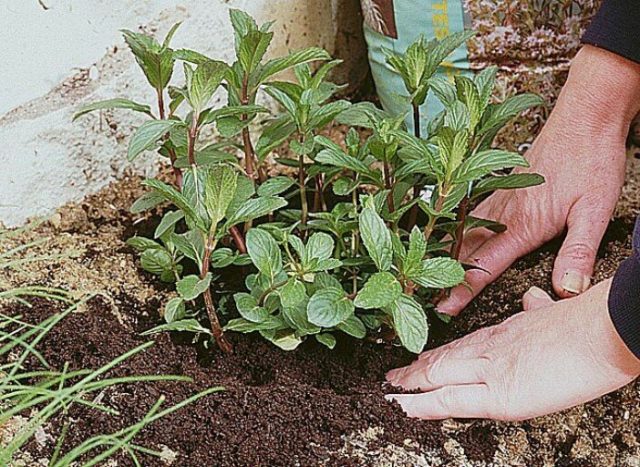

Mint is a very aggressive plant, it quickly spreads over the site with the help of root suckers, so it is better to grow it in a basket and cut off the elongated shoots. You can install slate, plastic and other improvised restraints around mint beds, restraining the growth of bushes.
How to use mint for pancreatitis
Pancreatitis is a consequence of improper diet, prolonged intake of hormonal drugs, irregular food intake. At the first symptoms of a pancreatic disease, it is necessary to seek help from a doctor, and only after consultation should one resort to treatment with alternative methods.
Mint tea for gastrointestinal problems - Pour boiling water over 1 teaspoon of the plant, drink it several times a day instead of tea. A little honey can be added instead of sugar.
Mint infusion with dandelion for pancreatitis - 4 teaspoons of chopped mint and 2 tablespoons of chopped dandelion roots, mix, add water (1 liter) and put on fire. Within 5 minutes, the drink must be boiled and left to infuse, then strain. Take the infusion 3 times a day before meals.
Video "Collecting mint"
From the video you will learn how to properly harvest mint.
Many people wonder when the mint herb should be harvested in order to get only high-quality and healthy herb. This must be done in the first months of summer. It is at this time that the grass is actively growing and blooming.
The collection is planned depending on the purpose of the subsequent use of the parts of the plant. During the full flowering period, menthol extract is obtained. In order to further dry the culture with stems, it is better to do the blanks until the buds appear, that is, the beginning of flowering.
After the beginning of flowering, it is permissible to collect mint anywhere, but best of all, away from city highways. If you do everything right, you can enjoy the pleasant-smelling mint collection for a whole year.
The collection is carried out 1 - 3 times a month. The frequency depends on how many years the herb has been growing in its place. Without a transplant, mint can exist for about 4 - 5 years. From the second year of life, it grows quite thickly. Cutting should not be done in the early morning or on rainy days.
Questions and answers
Can mint be eaten with pressure? Only a moderate amount will be beneficial. Hypertensive patients can drink tea or mint water only once a day. Systematic use will expand the vessels and reduce their tone, the person will calm down and relax, the pressure will gradually return to normal.
How does mint affect the heart? The plant reduces spasms of the heart muscle, it stabilizes the functioning of the organ in case of angina pectoris and arrhythmias. But excessive use of the herb can cause pain in the region of the heart.
Is mint bad for children? For children over 3 years old, menthol has a calming effect. Leaves can be added to lemonade, it will quench your thirst in summer, and warm tea will boost your immune system in winter. For babies, add mint water to their bathing water.
Is mint harmful for gastritis and high acidity? In this case, mint is very useful, it normalizes the acidity of the stomach, removes inflammation, eliminates painful sensations.
Is peppermint good for diabetes or not? The plant lowers sugar levels, so it must be present in the patient's diet. Very often, the plant is used in the complex therapy for the treatment of diabetes mellitus.
Neighbors and predecessors
Mint will be a good neighbor for almost all garden crops. It will attract pollinating insects to them, scare off many dangerous pests, and improve the taste of ripe vegetables. Experienced summer residents advise planting it next to tomatoes, cabbage, beets. And if ordinary nettle is next to mint, its leaves will smell even stronger, because more essential oil is formed in them.
An important point: if the plantings suffer from diseases or pests, no care will help to save them. Treating mint bushes with fungicides will make them unsafe for food or medicinal purposes. To prevent infection, it is better to place them away from flower beds, beds with vegetables and herbs - at a distance of at least 60-80 cm.
So that the cultivation of mint does not end in failure, air must circulate freely between the plants and easily penetrate to their roots. Good drainage is also important. The plantings should be inspected regularly, paying special attention to the inside of the mint leaves, where insects like to hide. Having found pests, they are washed off with the pressure of water from a hose.
Peppermint develops well after legumes, root crops, perennial grasses. Its root system is powerful, so it is better to make separate beds for the plant, otherwise it will simply clog the neighbors. The mint area does not need to be changed often. In one place, her bushes can remain up to 10 years.But they will have to be updated from time to time.
Mint is suitable for a rock garden. And if you plant it in large quantities, its bushes will quickly cover the soil with a decorative green carpet.
The main types of flower
Chocolate
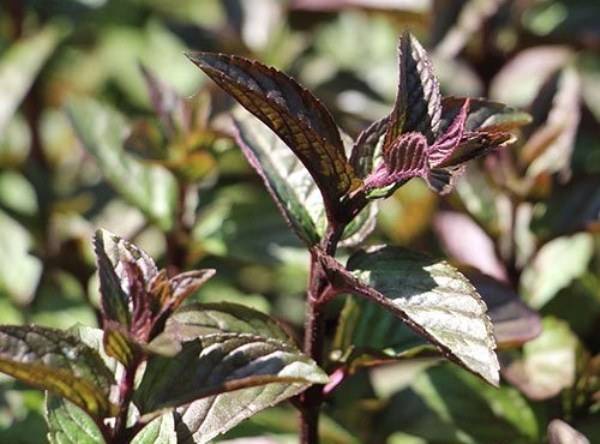

Mint Chocolate
Among the variety of mints, chocolate is popular for its chocolate flavor. It has green leaves with a purple hue. Plant height up to 25 cm... It grows at a high rate, as it has powerful creeping roots. It is best planted in a container. It can easily endure the first frosts. This plant is suitable for beginners and inexperienced gardeners alike. Basic rules for landing:
- Fertile, moist, can be semi-acidic soil.
- Lighted place or partial shade.
- Landing in early springwhen the frost has passed.
- Distance between bushes 50 cm.
- Fertilizer introduced one year after planting.
Menthol
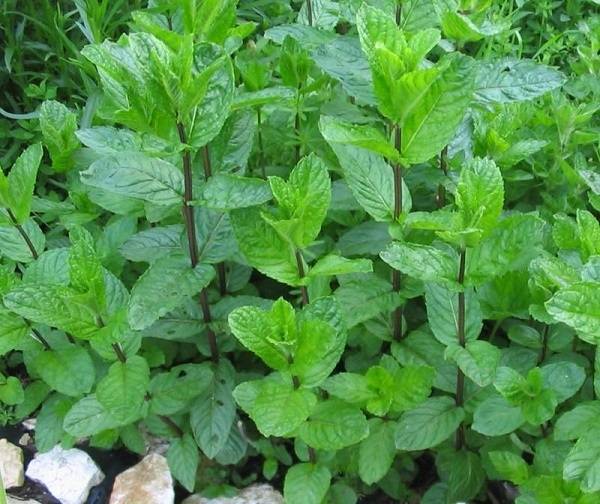

Mint Mint
Menthol mint is a type of peppermint that can grow up to 60 cm in height. It has a pungent odor and a high content of menthol. Unlike other species, it has dark stems. Practically not exposed to pests and diseases. Leaves can be plucked within 2-3 months after planting., while retaining all its useful properties.
Field
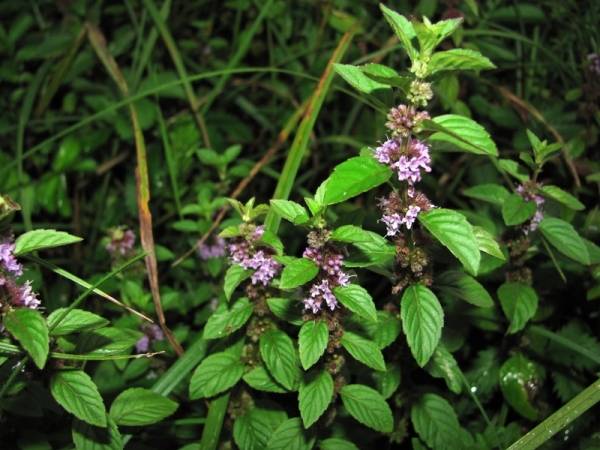

Field mint
This species grows in all countries of the world. Stems reach a height of 60-70 cm. Leaves are green, elongated. The flowers are pink-lilac, located at the top between the leaves. Unlike peppermint, field mint does not have a pungent odor and cooling taste.... It is widely used in cooking, making drinks and baking cakes.
Feline
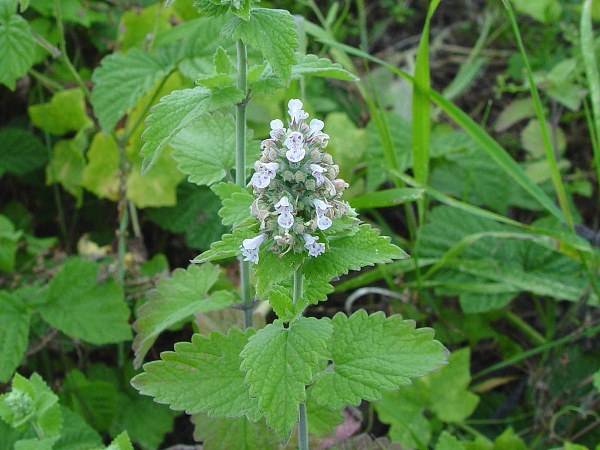

Cat mint
A perennial plant that contains essential oil. The aroma of this plant attracts cats. It can reach a height from half a meter to a meter. Flowers in the form of tassels are located on the crown... The flowers are white with purple dots. Flowering begins in late June, early July. It is widely used in cosmetology, cooking.
Water
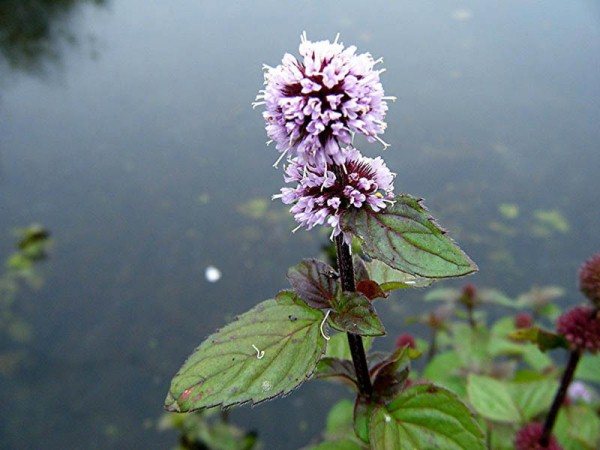

Water mint
A perennial herb, reaching a height of 70 cm. There are oval leaves, red in color. The flowers are small, collected in an inflorescence, lilac in color. If you rub a leaf, a mint smell comes out. Grows mainly on moist soils, near rivers, streams... It is used in cooking.
Fragrant
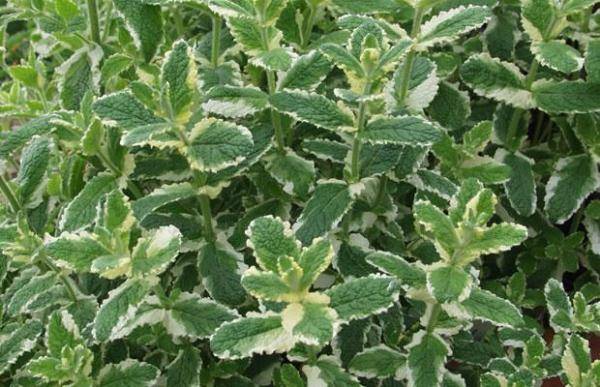

Fragrant mint
Fragrant mint is a perennial plant, about 50 cm. Has light green leaves carved along the edge... Blooms from July until the first frost. Able to withstand frosts up to 30 degrees. Requires constant pruning of roots, as it grows strongly due to creeping roots. Some varieties have white specks on the leaves.
Forest
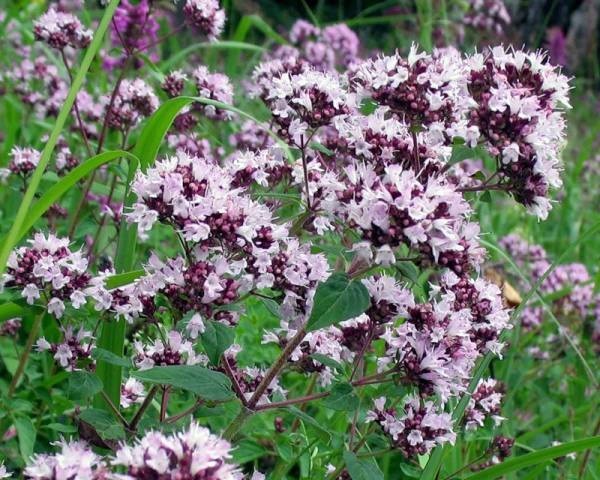

Forest mint
Forest mint can reach a height of 40 to 90 cm. It has tall, strong stems on which oblong leaves are located. It has strong branchy roots that spread very quickly and require pruning. Flowering occurs from June to August. In the first year, after sowing, flowering occurs, but there will be no seeds... Flowers can be red, pink, collected in inflorescences. The plant winters well, is not afraid of severe frosts.
Japanese
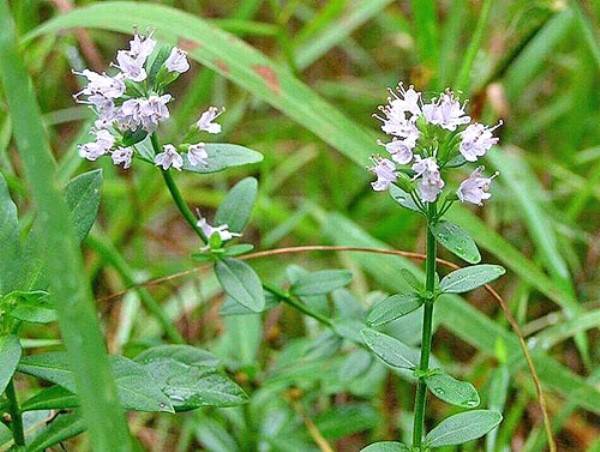

Japanese mint
Japanese mint appears as a perennial plant, growing from 15 to 50 cm. It grows mainly in swampy areas, it is considered a rare species... The flowers can be white or light purple, with 4 stamens. Flowering lasts almost 3 months, beginning in August until the end of October. It is used mainly in cosmetology and cooking.
Pepper
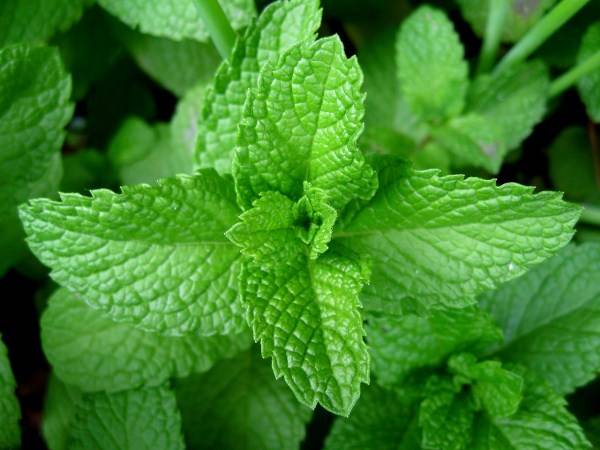

Peppermint
The most popular and familiar to everyone is peppermint. It is a perennial plant, up to 1 meter high. Leaves are green, serrated at the edges. Small purple flowers, collected in inflorescences in the form of an ear, are located at the top of the shoot. Flowering begins in June and ends at the end of September. Easily tolerates winter and severe frosts... It has strong creeping roots, due to which it grows quickly.It is a type of water mint. It is often used in folk medicine, perfumery, and cooking.
Curly
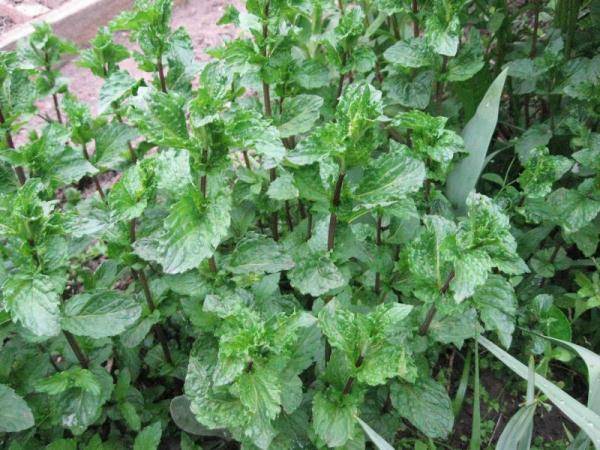

Curly mint
Curly mint practically does not differ from peppermint. The country of origin is America. The hallmark is the lack of a cooling effect. Curly mint contains less menthol. This type of essential oil contains:
- carvone;
- limonel;
- linaloon;
- citral.
Mexican
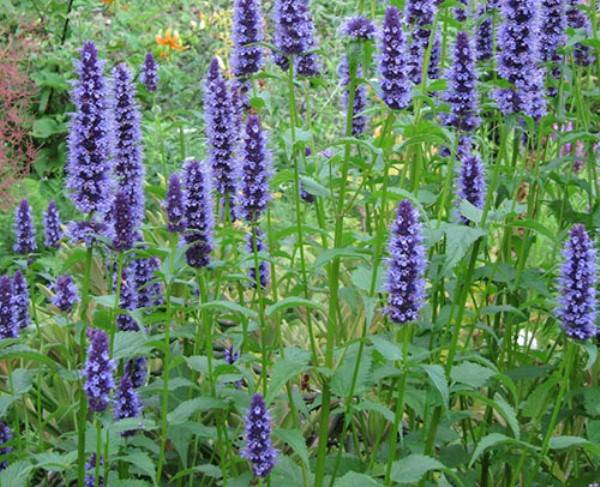

Mexican mint
The native land of this species is Mexico. Erect, spreading bush, up to 50 cm high. It mainly grows as an annual plant. It has a lot of greenery, oval green leaves. It begins to bloom in the first year of life. Flowers can be of different shades: pink, purple, white, blue. The size reaches up to 1 cm. The plant prefers fertile soil, a lit place... Does not tolerate severe frosts. For the winter, it must be transplanted into a pot for indoor conditions. Propagated by dividing the bush and by seed. It is widely used in cosmetology and cooking.
Lemon
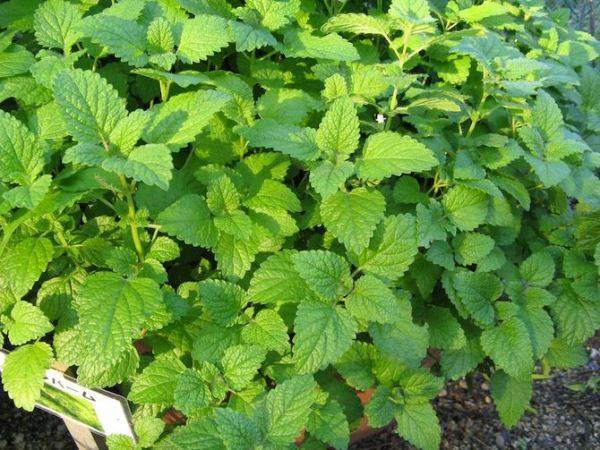

Lemon mint
Lemon mint is commonly called lemon balm. It can often be found in garden plots. It is an unpretentious perennial plant. It can reach a height of up to 1 meter... Under favorable conditions, after flowering, its seeds are carried by the wind, and almost everyone has good germination. A powerful, spreading bush has light green leaves, carved along the edges. The flowers are small, located at the top of the plant, and have a white, pink or yellow tint. A distinctive feature is the presence of a lemon scent, especially during flowering. It is unpretentious to the choice of soil, it grows easily on any type of soil. It includes:
- vitamin C;
- carotene;
- rosmarinic acid;
- caffeic acid;
- tannins;
- flavonoids.
Wild


Wild mint
Wild mint is usually called field mint. Has a delicate and mild aroma. Its essential oil contains:
- menthol;
- carvone;
- citral;
- geraniol.
And also the composition includes a large number of useful substances. Grows throughout Russia. It can be found near rivers, streams, wetlands, in forests... Perennial plant, up to 1 meter high. It has green leaves, serrated at the edges. The flowers are small, inconspicuous, can be of a light purple hue, and dark. The inflorescences are located in the form of an ear on the crown. The conditions are unpretentious. It is used in cooking and traditional medicine.
Wild mint varieties
Field mint
Field mint - Méntha arvénsis
Field (meadow) mint grows in rare forests, meadows and places near water bodies. It is found almost throughout Russia, grows in European countries.
The plant has oblong, pointed leaves of an ovoid shape, with denticles along the edges. The height of the stem is 15-100 cm.
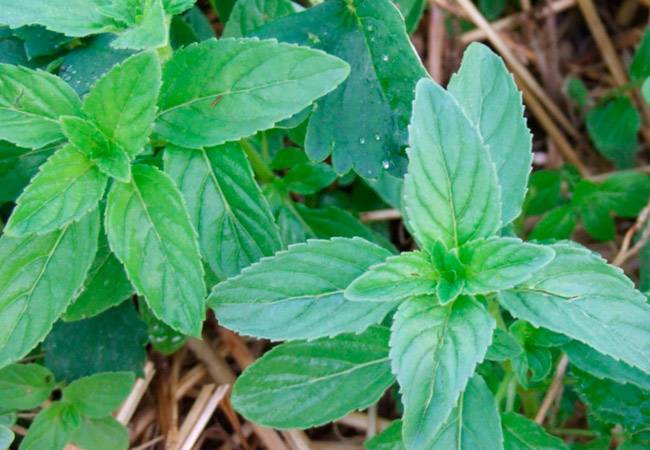

Field mint Méntha arvénsis
Wild mint blooms from June to October with lilac or pinkish flowers, collected in whorls. Thanks to the long flowering period, it is possible to collect raw mint throughout the summer, catching autumn! Meadow mint has a delicate aroma with menthol notes. its essential oil contains geraniol, menthol, carvone and other flavors. Peppermint oil has many properties and is widely used by humans.
Wild mint is used for medicinal and culinary purposes as an additive in desserts, meat and fish dishes, salads, syrups, herbal teas, sauces and cocktails.
Cat mint
Cat mint - Nepeta Cataria
Other names are budra, catnip. Catnip is a lush plant that grows up to a meter in height. It prefers to grow on hillsides, wastelands, along roads and in the forest. It grows everywhere - there is no catnip except in the homeland of polar bears!
The catnip stems branch well, the leaves are shaped like a card of spades. Small catnip flowers are collected in long brushes, they are pinkish, white and purple. Garden varieties are simply amazing with their lush flowering!
But most of all cats adore this plant! If catnip has a relaxing effect on a person, then on a cat tribe - exactly the opposite. Animals begin to roll on the ground, rub against mint bushes and bite leaves, in general, behave strangely. It's all about nepetalactone: when the essential peppermint oil begins to evaporate from the surface of the leaves, it emits a very pungent odor that excites the nervous system of the cat. But catnip is not harmful to animals, so do not prevent them from enjoying such pleasant communication.
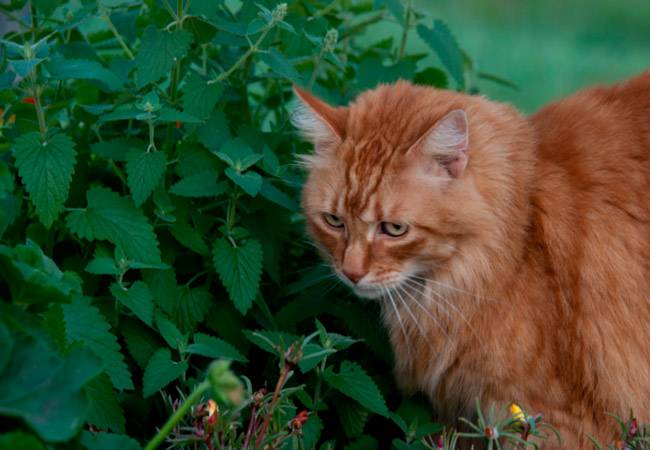

Catnip Nepeta Cataria
Catnip is used as a spice and medicine for colds, insomnia, dermatitis, digestive disorders, etc.
Water mint
Water mint - Méntha aquaticas
Water mint, whose height sometimes reaches 90 cm, loves wet places, therefore it is found along the banks of rivers and other forest bodies of water.
It differs from other varieties of mint in a sharper menthol smell and almost capitate purple inflorescences with two large bracts. The inflorescences look like bows with pink knots. Water mint blooms all summer. The plant has pubescent stems square in cross section and oval leaves of green or reddish-green color.
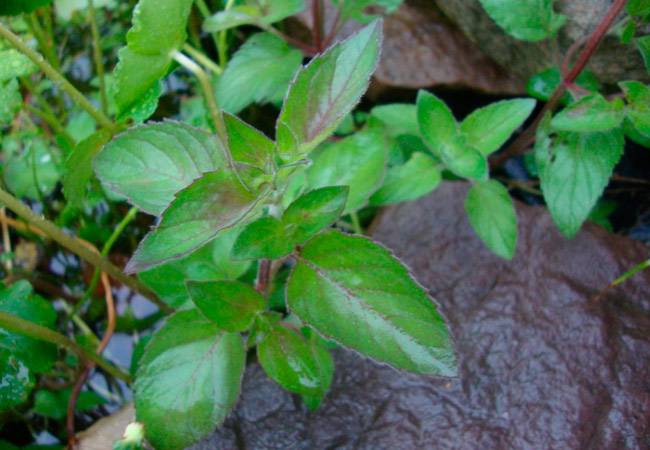

Méntha aquaticas water mint
Water mint is used as a spice for various drinks and dishes, and as a medicinal plant.
Aromatic mint
Aromatic mint - Mentha suaveolens
Fragrant mint grows mainly in the Mediterranean, some European and Asia Minor countries in sunny, humid places.
Plant height - from 30 to 100 cm. The stems are pubescent, erect, covered with small green foliage with teeth at the edges. It blooms with white small flowers, collected in dense inflorescences in the form of cones.
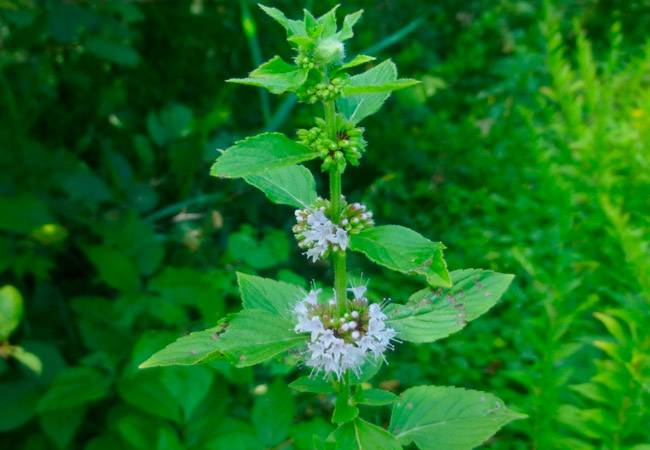

Fragrant mint Mentha suaveolens
Fragrant mint is added to food and drinks, and is used as a medicinal plant.
Japanese mint
Japanese mint - Mentha japonica
Japanese mint is a perennial that grows exclusively on the islands of Honshu and Hokkaido, in humid and swampy forests.
The maximum plant height is 40 cm, the stems are creeping or erect, the size of the tiny leaves is only 1.5-2 cm.
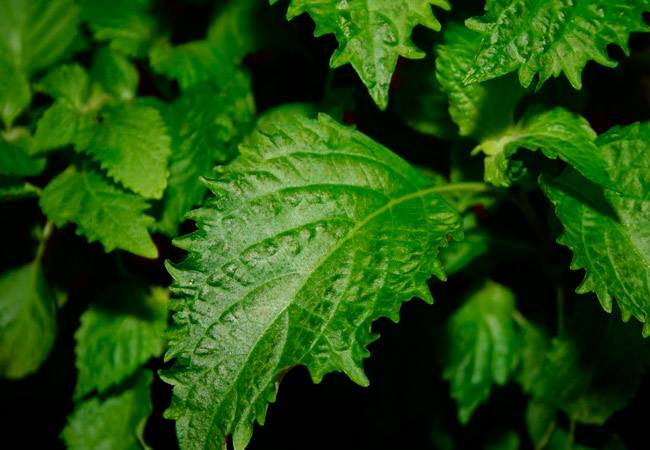

Species of mint: Japanese mint Mentha japonica
Japanese mint blooms from August to mid-autumn. Light purple or white small flowers are collected in sparse inflorescences. Due to the content of fragrant essential oils, this variety of mint is used as a spice seasoning or a component for the production of cosmetics.
Forest mint
Forest mint - Origanum vulgare
In Russia, forest mint was called oregano, in European countries - oregano. Many who are fond of mushroom "hunting" or just like to wander in the silence of the forest, often come across this fragrant plant on the way.
Oregano chooses sparse deciduous forests, the edges of coniferous forests, floodplain meadows and felling sites. Forest mint is distinguished by branched stems 30-70 cm high and elongated oval foliage with a dark top and a light bottom.
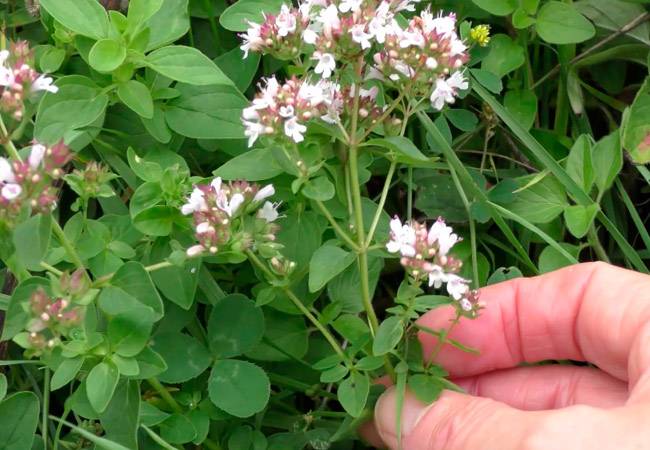

Species of mint: Forest mint Origanum vulgare
You can pick oregano from June to September - at the time of flowering. Unlike other species and varieties of mint, it forms corymbose inflorescences of pale purple or pinkish small flowers.
Residents of Russia make aromatic soothing teas from forest mint, and Americans and Europeans use it to season pastries, marinades, vegetable and meat dishes with it.
Where does mint grow?
Mint grows mainly in wetlands, along river banks, along streams and ravines. And also in the steppes, forest-steppes, practically in the entire European part of Russia. You can grow mint in your garden. Each species grows in different countries... For example: meadow is more common in Russia, in the Far East. Garden mint is more common in the southwest. Curly mint grows in Asia and Africa. Fragrant mint is widespread in the Mediterranean, Europe, Asia Minor.
Choosing a site
It is better to take a sunny place for growing mint, where there is shade at noon.Its bushes develop faster with a long day of light. Constantly being in dense shade near the walls of buildings or under spreading trees, they will not die or wither, but their growth will slow down.
Peppermint is undemanding to the quality of the soil. A soil that meets 5 conditions is ideal for her:
- easy;
- porous air and moisture freely passing to its roots;
- containing a lot of moisture, but not swampy;
- humus-rich;
- loamy or sandy loam.
If the soil in the area contains a lot of lime, this will not interfere with the cultivation of mint, but its leaves will give off a weaker aroma. Dense clay soil, in which water stagnates for a long time, is contraindicated in culture. Even proper care on such land will not save the plants.
Before planting mint, the site is prepared in the standard way: weeds are selected, they are dug up, fertilizers are applied. Both organic and mineral compositions are suitable for her. The height of the beds is determined by the type of soil. If it dries quickly, it is better to make them low. This will help keep the moisture in the ground for longer. If the soil in the country is damp, it is worth pouring high ridges. They will protect the roots of the plant from decay.
What medicinal properties does
Mint is widely used in folk medicine, cooking, and cosmetology. She is capable of having effects:
- pain relievers;
- vasodilators;
- anti-inflammatory;
- antiseptic.
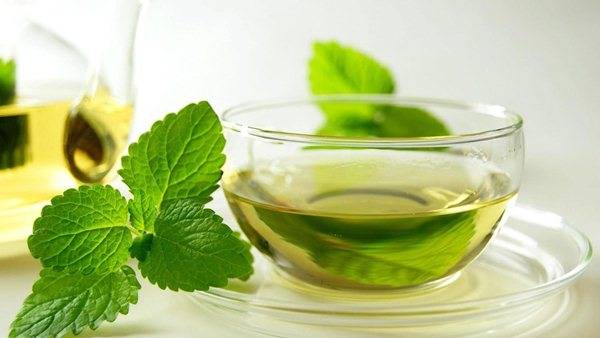

Mint is very useful for the body, helps in the fight against various ailments
Peppermint is a medicinal plant and should be harvested when the plant is full of color. For the manufacture of a medicinal product, shoots, leaves, flowers are used. Peppermint is used to treat the following conditions:
- asthma;
- respiratory tract diseases;
- heart diseases;
- gynecological diseases;
- cardiovascular;
- liver;
- gallbladder.
On the basis of the plant, drops, fees, ointments, tablets are made... Also, essential oil is added to toothpaste.
There are many types of mint in the vast world that have many beneficial properties. They also widely used in the field of medicine... If this medicinal plant grows on the site, it can serve as a home first aid kit.
HERBAL TREATMENT
| Watermint (watermint) is a perennial herb belonging to the labiate family. Stem tetrahedral, glabrous or pubescent, up to 80 cm high. Flowers are small, hairy. The fruit consists of four single-seeded nut-shaped parts. Blooms all summer. Spread. Water mint is widespread throughout Ukraine (much less often in Crimea). It grows along the banks of reservoirs, also in water, on muddy soils. Procurement and storage. In pharmacology, water mint herb is used for medical needs. The grass is harvested during the intense flowering of the plant. The collection of herbs is carried out in the morning: the parts of the stem covered with leaves are cut off. The collected raw materials are dried in a dry, protected from precipitation place, with good ventilation. Dry herb water mint leaves up to 15%. Finished raw materials M.V. stored in a well-sealed container (glass jars or bottles). Shelf life is 1 year. Pharmacies do not release water mint herb. Recipes for cooking dishes with herbs С‚СѓС ‚. Chemical composition. Dried raw mint water contains essential oil (up to 1%), linolenic, linoleic, palmitic acids, etc. The composition includes tannins, potassium nitrate. Essential oil of water mint does not contain menthol. Pharmacological properties. Water mint is used in folk medicine for the same indications as peppermint. The most common cases of M.V. - Obtaining a choleretic effect with stagnation of bile secretion in the gallbladder, abdominal pain in violation of the intestines (as part of complex therapy). They are also used with an insufficiently active digestive process, with intestinal disorders and abdominal pain, with flatulence, diarrhea, palpitations (tachycardia). In the treatment of abdominal pain, water mint preparations are considered more preferable in comparison with peppermint preparations. Ointments are prepared for external use. The prepared ointment is applied to poorly healing wounds, erosion of the cervix is treated (for the method of preparing the “peppermint oil” ointment, see the article Field mint). For internal use, an infusion of water mint is prepared (15 g of raw materials per glass of boiling water), taken warm, one glass a day. | APPLICATION OF MEDICINAL PLANTSRelated Topics:
Add comment Cancel replyThis site uses Akismet to combat spam. Find out how your comment data is processed. Related VideosX |
Garden mint varieties
Peppermint
Peppermint - Méntha piperita
The most common variety of garden mint, specially bred for mass cultivation in 16th century England.
It is a perennial with pubescent stems that grow up to 1.3 m in height, and oblong serrated leaves of bright green color. Peppermint blooms from June to August, forming inflorescences of lilac or pinkish flowers. Remarkably, honey collected from mint has a menthol flavor!
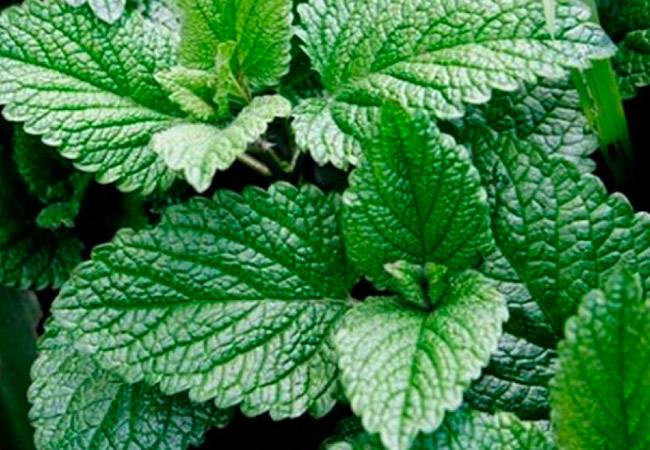

Peppermint variety Méntha piperita
Peppermint is used as a source of menthol and peppermint essential oil for the perfumery and cosmetic industry and medicine, as a seasoning for various dishes. By the way, it is better to cook fish with dried mint, it will turn out tastier and more aromatic than with fresh one.
Curly mint
Curly mint - Mentha spicata crispa
Other names are green mint, spearmint, curly mint.
It is successfully grown in places with a temperate climate - Europe and Russia, North America. In the wild, you can find curly mint only in northern Africa and southern European regions. The name of the variety comes from the fancifully twisted crushed leaves of a bright green color.
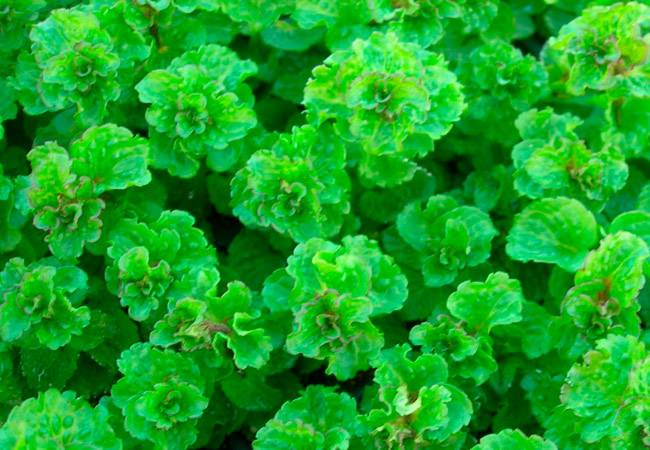

Curly mint Mentha spicata crispa
Powerful erect stems of curly mint grow from 30 cm to 1 m. Whorled inflorescences consist of light pink or white flowers.
Unlike peppermint with a pungent, persistent odor, its curly counterpart exudes a subtle aroma. However, spearmint contains a lot of carvone - a substance that improves lactation. So for nursing mothers who have little milk, curly mint is a real salvation!
Chocolate mint
Chocolate mint - Mentha piperita Chocolate
A variety of peppermint, loved by gardeners for its unusual aroma from a mixture of menthol, lemon and chocolate.
It prefers to grow in sunny and damp places, such as near water bodies. The stalks of chocolate mint, topped with dark green leaves with a purple tint, reach 40 cm.The plant begins to bloom in early August. At this time, the stems are covered with panicles of small lavender flowers.
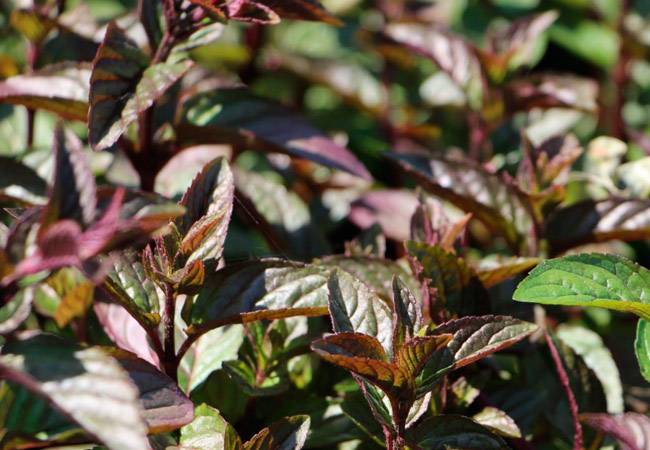

Mint chocolate Mentha piperita Chocolate
Chocolate mint is used as an additive to food: ice cream, baked goods, sauces and drinks.
Mentha aquatica L. - Water mint Sem. Labiatae - Lipoids
Description... A perennial herb with an erect tetrahedral and slightly branched stem, covered with hairs pressed downwards. The leaves are petiolate, opposite, round or elongated, with a cordate base or rounded, serrate along the edge, almost glabrous or with sparse hairs. The flowers are collected in multiples in the axils of the apical leaves on the branches of the stem, and the tops of the stem take the form of spike-shaped inflorescences in the form of heads.Calyx of 5 sepals, fused, funnel-shaped, with 5 pointed triangular teeth at the apex. Corolla is four-lobed, almost symmetrical, pink-violet, covered with hairs on the inner side, tubular in the lower part, and four-lobed in the upper part, and the lobes are almost the same size. 4 stamens, almost equally spread apart. The fruit splits into 4 rounded nuts, enclosed in the remaining cup. A highly variable species, represented in Bulgaria by a significant number of varieties. It blooms in the second half of summer and early autumn.
Spread... It grows along the shores of swamps, marshlands and floodplains, everywhere in the lowlands of the country, but in some places it reaches an altitude of more than 1000 m above sea level.
Organs used... The dried aerial part of the plant or only the leaves are used. Collect during flowering.
Content... Dry leaves contain about 1% essential oil, which contains about 36% free linalool, 10% linalyl acetate and carvone, sesquiterpenes (does not contain menthol).
Action and application... Mint water is very much used in folk medicine for complaints of pain in the stomach and as a choleretic agent. It is believed that in its relieving effect on stomach colic, watermint is superior to that of peppermint.
A hot infusion is used, prepared as follows: 2 tablespoons of crushed water mint raw materials are poured with a glass of boiling water; drink in sips for one day.
fitoapteka.org
Storage of dried mint
Mint with sugar for the winter is often harvested by zealous housewives. This is the best way to add it to tea.
If you just dry it, then at room temperature this must be done for several days. To determine the readiness of a plant, simply press down on its leaf. When it easily separates from the stem and crumbles in your hands, drying can be safely completed. After that, grind the raw materials and pack for long-term storage.
It is important to store the mint properly after drying. Of course, chopped greens take up little space, but at the same time they lose their color and aroma more intensively. Therefore, it is best not to grind it into powder ahead of time. And if it comes down to grinding, then do not use a coffee grinder. Use gentle manual methods instead.
Glass jars are best for storage. They must be dry with a tight-fitting lid. So neither moisture nor pests will penetrate inside. In a dry place, herbs will retain their aroma for up to six months.
Drying the plant takes about a week. To check if it is ready for storage, try the leaves by touch: if they rustle and easily separate from the stem, crumble, then the spice can already be put into a prepared container.
To save space, some housewives grind the grass or even grind it into powder.
This is allowed, but still it is best to leave this product intact, in leaves and even with stems, so it retains all its unique taste and aroma.
The best places to store spices are glass jars with ground-in lids or bags made from natural fabric (cotton or linen).
Sealed vessels made of ceramics or wood, vacuum packaging and zip-lock bags are also used, although it is still preferable to do without plastic and cellophane, which can absorb essential oils. For the same reason, it is not recommended to use paper or any cardboard containers.
Store properly packaged mint in a dark and dry place, away from heating appliances.
Mint retains its best properties for no more than two years, no matter how carefully it is stored, so try to always mark the harvest date on the packaging and do not forget to review your stocks from time to time.
If your mint is stale, but it's a pity to throw it away, you can add it to your bath water. It is pleasant and beneficial for the skin.
Recently, when many owners have freezers in the house, they are trying to freeze various products, because in the case of quick freezing, this way you can perfectly preserve their color, taste and aromatic properties.
We offer you to familiarize yourself with: Sowing a tomato before winter in a greenhouse
Suitable for freezing and mint. For this, freshly cut plants are taken, washed in cold running water and well dried.
They are divided into "portioned" bundles, wrapped in aluminum foil and sent to the freezer.
It should be remembered that mint can both give off and absorb different odors, so you need to think carefully about its proximity to other products.
And yet, after weighing all the pros and cons of this method, agree that the old, traditional way of drying and storing mint will never let you down.
If you have carefully thought through the whole process and did everything right.
What peppermint likes: plant care rules
Peppermint is unpretentious, so the cultivation and care of this plant does not require special knowledge. It is enough to follow simple rules: do not forget to water the plants, regularly loosen, remove weeds and perform a simple sub-crust.
Soil care
In summer, the soil must be loosened regularly. You can limit yourself to a couple of times, but you can loosen it more often - it won't get any worse. It is also necessary to regularly remove the weeds around the peppermint, this can be done at the same time as loosening.
When and how to water peppermint
Mint is not very demanding for watering, it is enough to water the plants twice a month. In dry weather, the intensity of watering should be increased, peppermint does not like overdried soil.
Mint is a delicious and versatile condiment that can be added to fruit salad, lamb or fish dishes, tea or cocktails. There are many different varieties of mint, they are all unpretentious, and with proper care they will grow for many years. However, mint grows very easily and will compete with surrounding plants for territory if allowed to grow uncontrollably. To grow mint successfully, you need to plant it in separate containers, or find a way to keep the mint roots from growing outside of its designated area.
Mustard Leaves - Cải Xanh
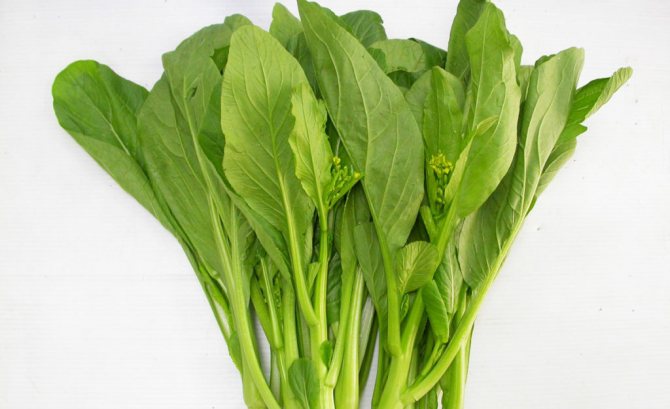

With wide and long leaves, this herb can be eaten raw or cooked in a dish. It is commonly found in salads and is the main ingredient in dưa cải chua (Vietnamese pickled mustard greens).
Beneficial features - Mustard leaves are high in vitamins A, C and K and are also a good source of calcium. Its antioxidant properties also help the body fight free radicals, and regular consumption can help you fight heart disease and diabetes.
Preparation for winter storage
Before sending the greens to the refrigerator, they must be dried. The mint is carefully sorted out. It is imperative to get rid of damaged or dry parts of the plant. And then rinse and dry.
There is a secret on how to keep mint leaves fresh for the winter. To do this, collect the herbs you have processed in bunches. Place in containers with a minimum amount of water, and cover with foil on top. You can also use a clear plastic bag. Then send the containers to the refrigerator.
Mint shoots, as well as leaves separated from the stems, are wrapped in paper napkins. They are placed in containers or tight-fitting bags. Only in this form will mint retain its freshness, its beneficial properties and its original appearance for about a month. But then nature will take its toll. Color and elasticity will be lost, and nutrients will begin to evaporate every day.
How to keep mint fresh for the winter for longer? There are several ways to do this.
When to collect?
Plants are harvested from May to August, throughout the summer. The exact collection time depends on the region.It is best to harvest plants before flowering during the bud formation period.
For tea, use delicate leaves, the collection takes place on a sunny day in the morning. For the preparation of infusions, leaves with stems are collected, which are cut off with a sharp knife or sickle. It is believed that the harvesting should be done with the growing moon, since at this time all medicinal plants contain a maximum of useful substances.
Features of growing a house in one container
You can grow mint and lemon balm not only in the garden, but also at home, on the windowsill or balcony. This should be a sufficiently illuminated place, since the daylight hours for these crops should be at least 7 hours.
You can plant mint and lemon balm not only in separate pots, but also in one common:
- Accordingly, the pot for such a planting should be much larger. The distance between mint and lemon balm plants in a pot should not be less than 10 cm, since mint tends to grow strongly.
- The distance from the plant to the edge of the pot is at least 5 cm.
- The depth of the container for planting should be sufficient for the development of the root system of plants (at least 20 cm), because the larger the area of plant nutrition, the greater the yield of leaves and flowers that can be harvested.
- When growing mint and lemon balm at home, frequent watering is necessary as the soil dries up, as well as fertilizing with complex fertilizers after each mass cutting of greens.
Watercress - Xà Lách Son
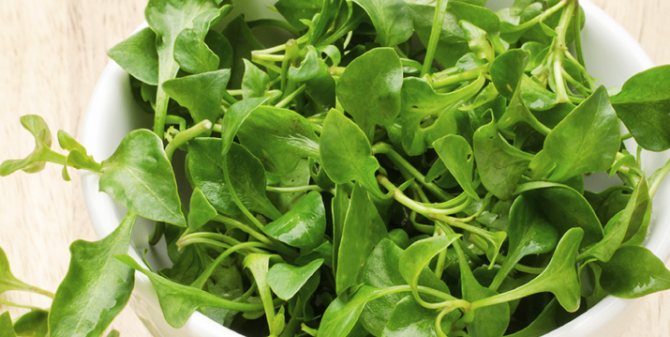

The herb has green, wavy and waxy leaves growing from a thick stem. With a peppery scent, it is often found with herbs when you order Vietnamese soup. It also goes well with pancakes and grilled meats.
Beneficial features - It is rich in vitamins B, E, K, calcium and magnesium, which help prevent heart disease and diabetes.
Location and growth conditions
Since mint is very fond of light and warmth, sunny hills and lawns are well suited for its growth; in the afternoon, moderate partial shade is acceptable. To save space in small areas, it can be planted near young fruit trees with a not too dense crown. The culture does not impose special requirements for the quality of the soil, however, it grows more luxuriant and juicier on light, well-fertilized soils. In accordance with crop rotation norms, the best preceding crops for mint are root crops (beets, carrots, potatoes), corn and legumes (peas, beans).
In late autumn, after harvesting, the mint bed is thoroughly loosened, clearing it from the roots of weeds and old tops. In the event that the site has not been processed before, it should be dug up with the introduction of rotted manure, humus or peat, and then leveled with a rake. Along the edges of the plot, sheets of iron are dug into the ground, since mint grows quickly and begins to oppress neighboring plants.
Bitter Herb - Rau Đắng
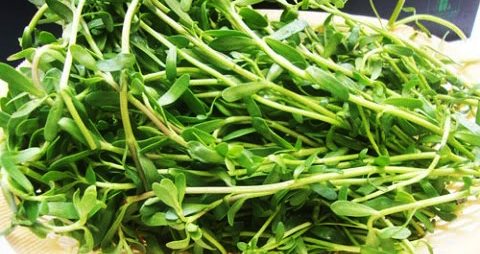

Bitter herb is a herb with slender stems with narrow, alternating leaves. Like its name, this herb leaves a bitter taste in the mouth. It is usually served with hot pots and used for soups, only added if guests want a little bitterness in the broth. In other words, it cannot be eaten raw and the stem is eaten.
Beneficial features - Bitter herb is also traditionally used to treat fever, joint pain, and inflammation.
Vietnamese Railing - Tía Tô
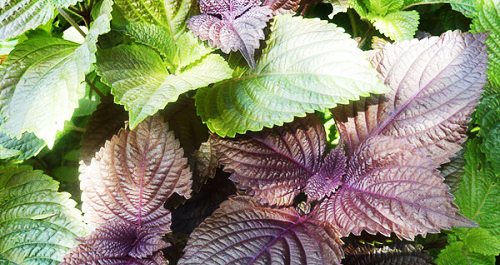

The Vietnamese perilla has green leaves above and purple below. Perilla has a strong earthy flavor and is usually served with popular soups such as phở and bún chả, salads and grilled meats.
Benefit for health - This herb is known for its antibacterial and antiviral properties. In Chinese medicine, it is used to treat respiratory ailments such as cough, stuffy nose, and asthma.
Water Spinach - Rau Muống
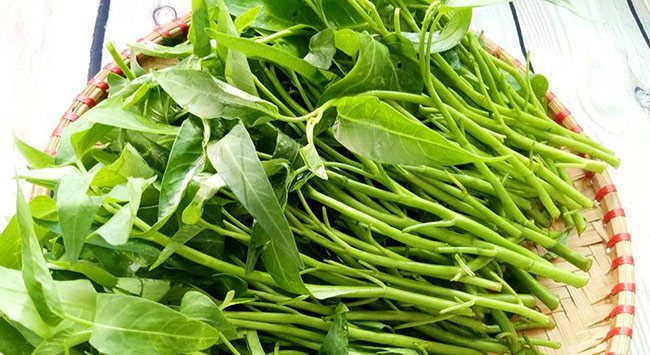

With slender, hollow stems and long, flat, arrow-shaped leaves, water spinach has a juicy texture with nutty flavors. It is usually added to roasts as a vegetable and is often added to soups.
Beneficial features - This herb is an excellent source of protein, calcium, iron and vitamins A and C. Water spinach is used to treat insect bites and is well known for its antioxidant properties.
Features of the compatibility of these plants
This question can be immediately answered in the affirmative. This became possible with the advent of powerful freezers in everyday life. At low temperatures, mint appears to be canned. All processes in it stop. As a result, you get a spicy herb that retains its color and most of the taste and aroma properties.
When you already know if you can freeze mint, it will be helpful to understand the methods. This is best done in bunches. But it is also possible with separate leaves. They are packed after washing and drying. Store such mint in foil or plastic containers.
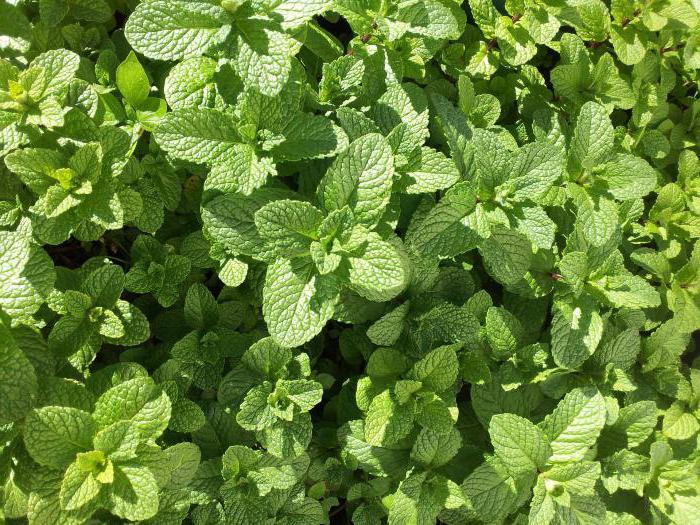

Frozen mint is a real find for fans of aromatic hot drinks on long winter evenings. Mint leaves are often used in batches, frozen into ice cubes.
How to care?
To increase the yield during the growing season, fertilizing and 3-4 times watering are carried out, especially during the dry period. Starting from the second year of plant life, you can carry out early spring feeding with ammonium nitrate or nitrophos. The main pests of mint and lemon balm are:
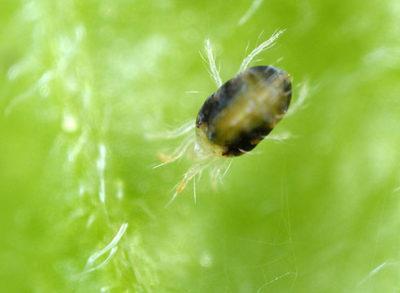

wireworms;- spider mite;
- weevils;
- caterpillars of the scoop-gamma;
- mint leaf beetle;
- mint flea;
- mint aphid.
To combat aphids and mites, you can spray twice with a 3% solution of liquid soap. Tobacco dust can be used against leaf-eating pests.
The main disease of both mint and lemon balm is rust.... As a result of this disease, complete leaf shedding can occur, and the leaves are the most valuable part for which these crops are grown. A good anti-rust agent is Bordeaux fluid. Spraying is carried out with a 1% solution 3-4 times per season. All chemical treatments must be completed no later than one month before harvest.
Asiatic herb leaf - Rau Má
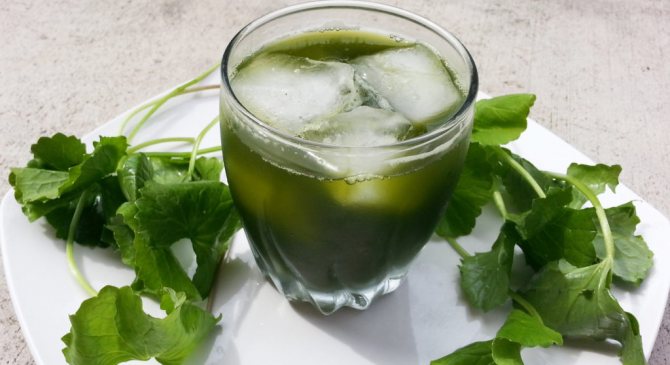

This tiny herb has very thin stems and rounded leaves, and has a slight cucumber flavor. It is often eaten raw in salads or used in fresh spring rolls, and is also the main ingredient for nước rau má (beanthorn juice).
Beneficial features - It is known for its antibacterial, antiviral and anti-inflammatory properties and contains vitamins B1, B2, B3, and B6, as well as calcium, magnesium, sodium, manganese and zinc.
Coulantro - Ngò Gai
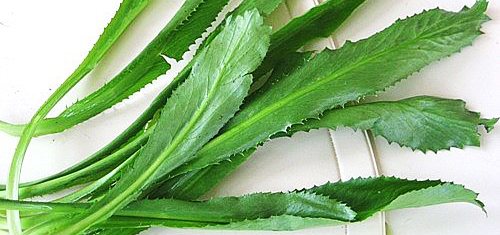

Coulantro is a herb with long, narrow, serrated leaves and has a slightly stronger flavor than cilantro. This herb is often served with phở, bánh xèo soups and sour soups.
Beneficial features - In traditional medicine, it is commonly used to treat diarrhea, colds, pneumonia symptoms, and many other conditions.

